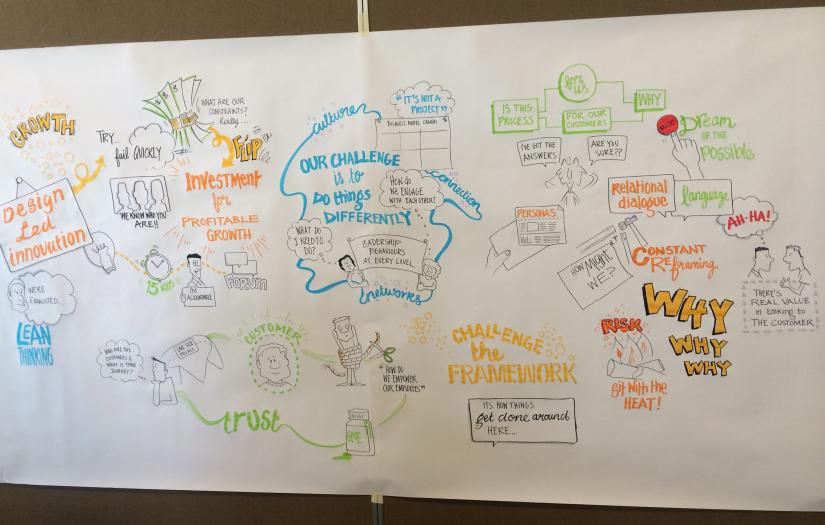If there is one thing that everyone can agree on it is that we are living through a time of rapid and unexpected change that is transforming not only the world we live in but our relationship to it and to each other.

The most salient problems in our society at the moment – climate change, mass migration, global pandemics, inequality, to name a few – can’t be approached in isolation. To solve these problems requires a fundamental transition in the way societies think and behave and the way economies operate.
For the business community, that is going to require leaders who embrace non-traditional skills; who can consult and collaborate outside of their usual networks and who can use design thinking to steer their teams, organisations and communities through transition towards successful outcomes.
UTS is one of the few universities focussed on building those capabilities in its postgraduate courses, working at the cutting edge in design outcomes and business innovation.
Professor Cameron Tonkinwise at UTS School of Design says the corporate world already understands that design thinking is a process of developing innovation, that draws on the kind of creative problem solving used by some designers. But newer design disciplines are offering gateways to transition and transformation.
Core to the postgraduate design program is the relatively recent discipline of Service Design and UTS is seeing enormous demand as almost no one is teaching it.
Businesses are recognising that they can’t continue to make money by simply producing and selling stuff. If I am an MBA student, I know about value proposition, but Service Design goes far beyond this. It is about changing the expectations, habits and rituals not only of customers but employees, changing how organisations interact with people and enabling them to have intimate conversations that are consensual.
What the Masters course explores is how to create those experiences, the material side, the touch points, the way it looks and feels as it unfolds and how to interact with people and get employees and customers to behave in a certain way.
“You absolutely need to have a design background to grasp that,” says Tonkinwise. “It requires skills that encompass social psychology, expertise in organisational change and the material quality of everyday practice, including dealing with mistakes and responding to problems.”
As an example, Tonkinwise refers to a collaboration that he has led between the School of Design and one of the major banks researching ways in which the bank can transition to more inclusive services by addressing financial scams – a well-funded, fraudulent practice that has seen a massive increase during Covid.
The banks are not liable to repay customers who have lost out financially as they consented to handing over their money or bank details to the scammers. But it is a huge problem for the banks because if they don't do anything they risk massive reputational damage – so they have an interest in minimising the number of people affected by scams.
In response, design thinking is being applied to transform service provision by getting banks to change their protocols and customers to change their behaviours. The result is a creative campaign that is culturally and linguistically diverse and is designed to embolden people to seek verification when they get a phone call saying ‘you are about to be arrested’ or ‘your account needs funds now’.
“Customers are used to being asked by banks to verify their identity but not the other way round. Banks should be a lot more tolerant of proving their own identity,” says Tonkinwise.
This design focus on small, human-scale interactions may seem like micro responses to macro-scale problems. But that is the point, says Tonkinwise.
At an everyday practice level, the garments you wear, the way you open a window, how much water you use – or asking the bank to prove it is who it says it is – these are the pinch points, where humans are interacting with transitional design solutions. System-wide change is only possible when that occurs.
Transition Design practice has been around for the past five years and there are signs of it moving into mainstream thinking. Tonkinwise has been leading work with Energy Consumers Australia and the Energy Security Board that brings Transition Design approaches to the shift to a Distributed Energy System.
“As householders install rooftop solar, the whole electricity network needs to be transformed to remain secure and resilient. This is not just an engineering problem, but requires householders to develop new ways of interacting with the electricity they both need and produce,” he says.
This is all part of a bigger picture of societal transformation that is omnipresent in Transition Design. It forces us to think holistically about our world and focus on everyday life, temporality and place in order to understand and appraise the context for potential systems interventions.
And what could be more worthwhile than that?

